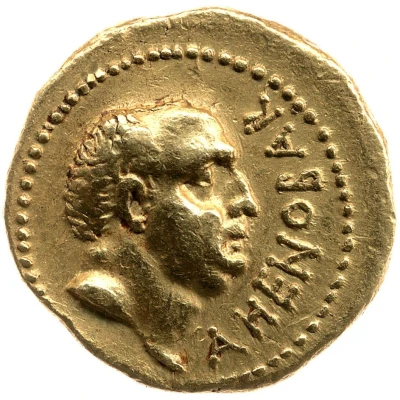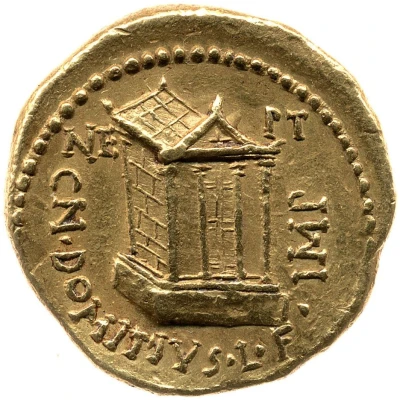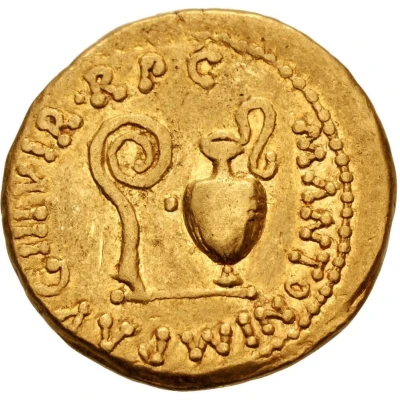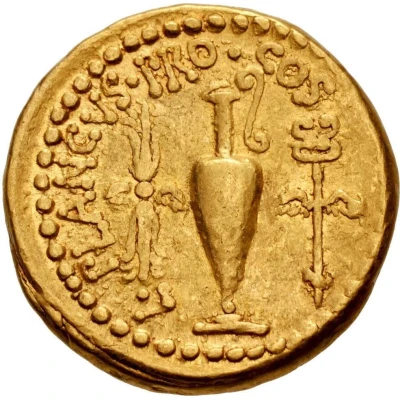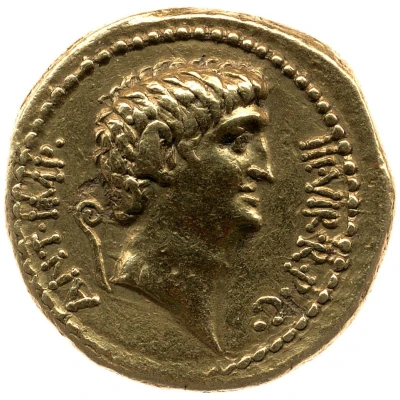
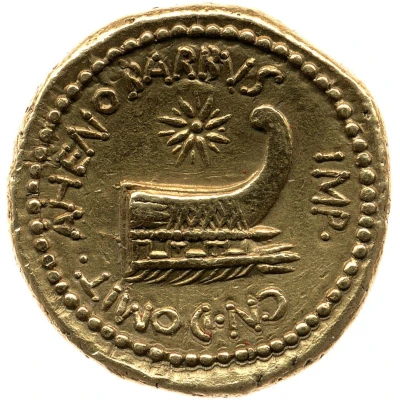

© Trustees of the British Museum
Aureus - Mark Antony ANT·IMP·III·VIR·R·P·C / CN·DOMIT·AHENOBARBVS·IMP 40 BC
40 BC year| Gold | 8.1 g | 19 mm |
| Issuer | Rome › Roman Republic (509 BC - 27 BC) |
|---|---|
| Period | Republic (509 BC - 27 BC) |
| Triumvir | Mark Antony (Marcus Antonius) (43 BC - 32 BC) |
| Type | Standard circulation coin |
| Year | 40 BC |
| Value | Aureus (25) |
| Currency | Denarius of 16 Asses (141 – 27 BC) |
| Composition | Gold |
| Weight | 8.1 g |
| Diameter | 19 mm |
| Shape | Round (irregular) |
| Technique | Hammered |
| Orientation | Variable alignment ↺ |
| Demonetized | Yes |
| Updated | 2024-10-06 |
| Numista | N#328975 |
|---|---|
| Rarity index | 100% |
Reverse
Prow of galley right, star above.
Border of dots.
Script: Latin
Lettering: CN · DOMIT · AHENOBARBVS · IMP
Unabridged legend: Cnaeus Domitius Ahenobarbus Imperator
Translation: The emperor Cnaeus Domitius Ahenobarbus
Comment
Babelon Antonia 55 and Domitia 22; Bahrfeldt 86; Mazzini 9; Biaggi 49.
Only four specimens known.
Interesting fact
One interesting fact about the Aureus coin featuring Mark Antony is that it was issued during a time of political turmoil in ancient Rome. Mark Antony, who was one of Julius Caesar's closest allies, had recently defeated Brutus and Cassius, the assassins of Caesar, and was now vying for power against Caesar's adopted son, Octavian (later known as Augustus). The coin was minted as a way to promote Mark Antony's image and legitimacy as a leader, and its design features the goddess Venus, who was associated with both love and victory, on the reverse side. This coin is a rare and valuable artifact that provides insight into the political and social climate of ancient Rome during a time of great change and upheaval.
